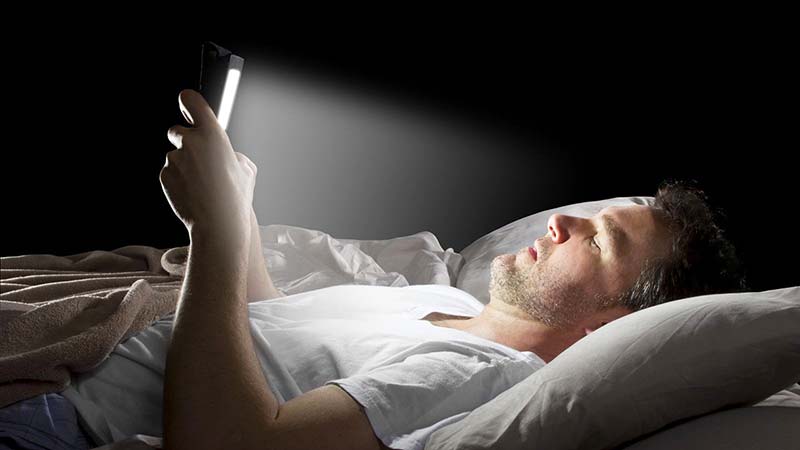An international team of scientists led by researchers at the University of Manchester in the United Kingdom, and the University of Colorado in the United States, have shown that exposure to electric light throughout the day has a negative impact on sleep patterns.
In their newly published study the scientists show that the light humans experience in daily life heavily influences body rhythms, with around-the-clock access to electric lights combined with reduced exposure to natural sunlight leading to disruptions in sleep. The combination of these factors have also been found to negatively impact overall human health, well-being, and productivity.
In what is considered the first-ever, evidence-based, consensus recommendations for healthy daytime, evening, and nighttime light exposure, the scientists also suggest light-exposure patterns during daytime and in the evening that people could adopt in order to ensure healthy body rhythms, restful sleep and daytime alertness.
The study now provides a framework to inform how interior space, ranging from workplaces, educational establishments, and healthcare facilities to our own homes, should be lit during daytime and in the evening.The guidelines provided by the study will also assist lighting and electronics industries design healthier environments and improve how we light various interior spaces.
The study showed that light affects our daily patterns of sleep and alertness through a specialized cell in the eye using a light-sensitive protein called melanopsin, which is different from proteins in the eye’s rods and cones supporting vision. The proteins in rods and cones are currently used to measure ‘brightness’ of a light source.
Melanopsin is found in photoreceptor cells in the retina that are particularly sensitive to the absorption of short-wavelength (blue-cyan) visible light and communicate information directly to the area of the brain called the suprachiasmatic nucleus (SCN).
Previous studies on mice have shown that melanopsin aids in controlling sleep cycles and wakefulness. Using controlled pulses of blue light the scientists were able to successfully transition the mice from slow-wave sleep (SWS), which is commonly known as ‘deep sleep’, to long-lasting wakefulness. The study underlines the potential to use melanopsin as a therapeutic target for controlling the sleep-wake cycle.
In mammals, including humans, the SCN area, also known as the central ‘body clock’, plays an important non-image-forming role in the photoentrainment of circadian rhythms in mammals. An organism that is photoentrained aligns its activity to an approximately 24-hour cycle, corresponding to the solar cycle on Earth.
The research team behind the study developed a new light measurement standard tailored to this unique property called melanopic equivalent daylight illuminance. By analyzing data across a range of laboratory and field studies, the scientists were able to form widely applicable and meaningful recommendations as to how we should use, and should not use, light in our daily lives.
The scientists say their new measurement approach can reliably predict the effects of light on human physiology and body rhythms. The researchers now plan to integrate the study’s recommendations into official lighting guidelines, which currently focus on visual requirements, rather than light’s effects on health and well-being. They expect increasing sophistication in LED lighting technology and the availability of low cost light sensors to increase the ease with which people can optimize their personal light exposure to best support their own body rhythms.
In a related but different study that focuses on the negative effects of light on sleep and human health, researchers at the Northwestern University in the United States found that sleeping even just one night with a dim light, such as a TV set with the sound off, raised the heart rate and blood sugar levels of healthy young people. The dim light from the TV entered the eyelids and disrupted sleep despite the subjects being asleep with their eyes closed.
Heart rate typically drops at night, slowing down as the brain repairs and rejuvenates the body. Numerous studies have shown that an elevated heart rate at night can be a risk factor for future heart disease and early death.
The results from the new study demonstrate that just a single night of exposure to moderate room lighting during sleep can impair glucose and cardiovascular regulation, which are risk factors for heart disease, diabetes, and metabolic syndrome. The study highlights the importance for people to avoid or minimize the amount of light exposure during sleep. The Northwestern team recommended not turning any lights on while sleeping. But if you need to have a light on for safety reasons, then make sure it is a dim light that is closer to the floor.
The study also found that the color of the light was also important in the impact it had on the human body. Amber or a red-orange light is less stimulating for the brain. Do not use white or blue light, and keep light far away from the sleeping person.
It is also recommended to use eye masks or blackout shades in case you cannot control the amount of light coming from outdoors, and move your bed so the outdoor light is not shining on your face.

